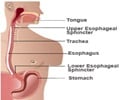Scientists have found that two non-surgical treatments for GERD-a condition in which acid from the stomach backs up into the oesophagus-can help reduce a patient's use of medicine.
Scientists have found that two non-surgical treatments for gastroesophageal reflux disease (GERD)-a condition in which acid from the stomach backs up into the oesophagus-can help reduce a patient's use of medicine, and improve voice and swallowing symptoms.
While one type of therapy seems to be effective for reducing heartburn and cough, the other may help reduce regurgitation.GERD is typically treated first with medications such as proton pump inhibitors, according to background information in a research article in the Archives of Surgery, one of the JAMA/Archives journals.
However, patients often find it difficult to comply with or afford long-term drug therapy, and, consequently, GERD returns.
Surgical options have been available since the 1990s, and more recently, endoluminal therapies that involve entering through the body's natural passages to repair the underlying causes of GERD have become available.
One endoluminal therapy, full-thickness plication, involves using a long, narrow tool known as an endoscope to tighten the junction between the oesophagus and the stomach with sutures.
A second, radiofrequency therapy, delivers energy waves to the muscles of the oesophagus and stomach, purportedly improving the function of the valve between the oesophagus and the stomach.
Advertisement
Only radiofrequency was available for the first two years of the study, and treatment decisions were based on patient preference, the surgeon's judgment and anatomical factors for the remainder.
Advertisement
The researchers asked that patients to report their medication use and rate their GERD symptoms before and after the procedure.
After an average of six months, follow-up data was obtained for 51 percent of patients.
The researchers said that among those who underwent radiofrequency treatment, on follow-up the percentage with moderate to severe heartburn decreased from 55 percent to 22 percent. Medication use among such patients also decreased from 84 percent to 50 percent.
According to the researchers, decreases were also seen for swallowing difficulties, voice symptoms and cough.
In the full-thickness plication group, moderate to severe heartburn decreased from 53 percent to 43 percent of patients; medication use decreased from 95 percent to 43 percent; and decreases were seen for regurgitation, voice symptoms and swallowing difficulties.
There were no changes in chest pain or asthma symptoms after treatment in either group, said the researchers.
"Our experience indicates that radiofrequency and full-thickness plication are both effective, providing symptomatic relief and reduction in proton pump inhibitor use. For patients whose chief complaint is regurgitation, full-thickness plication may be the preferred procedure. Further study is needed to determine the long-term effectiveness of endoluminal treatments," the authors conclude.
Source-ANI
SRM/L










